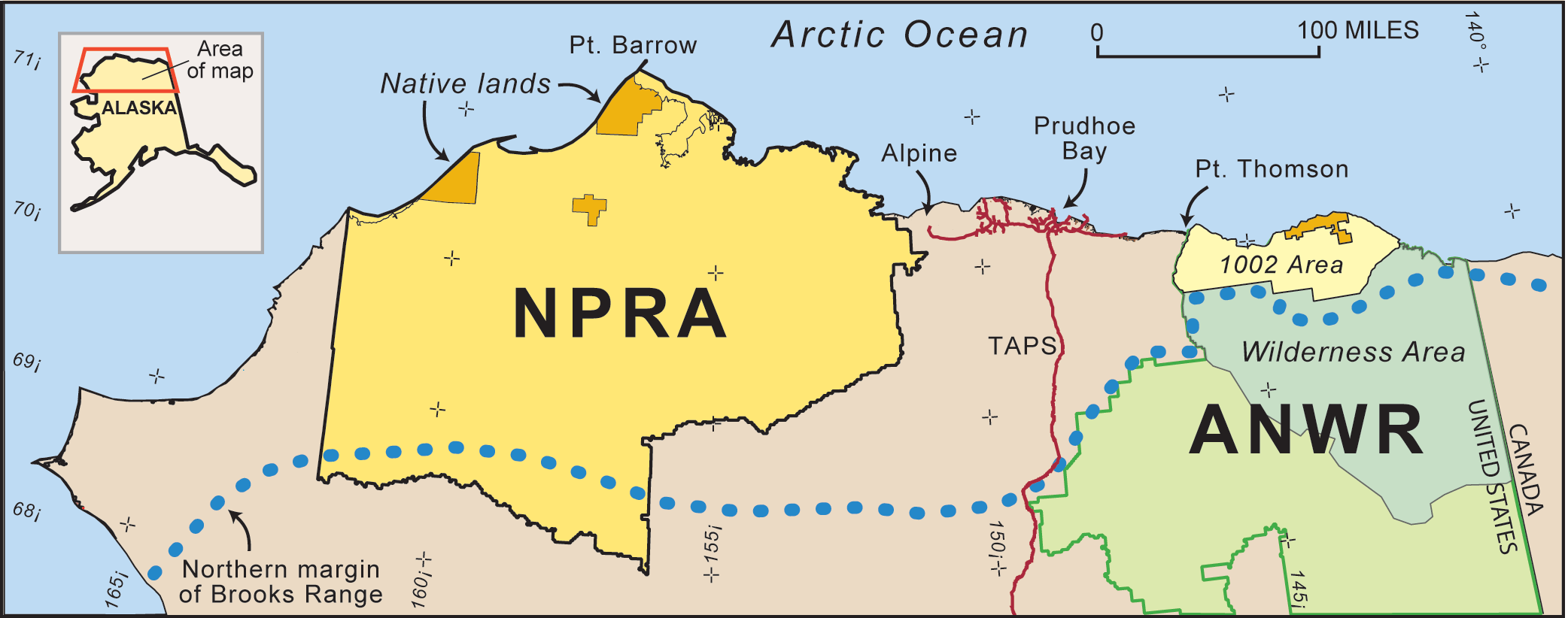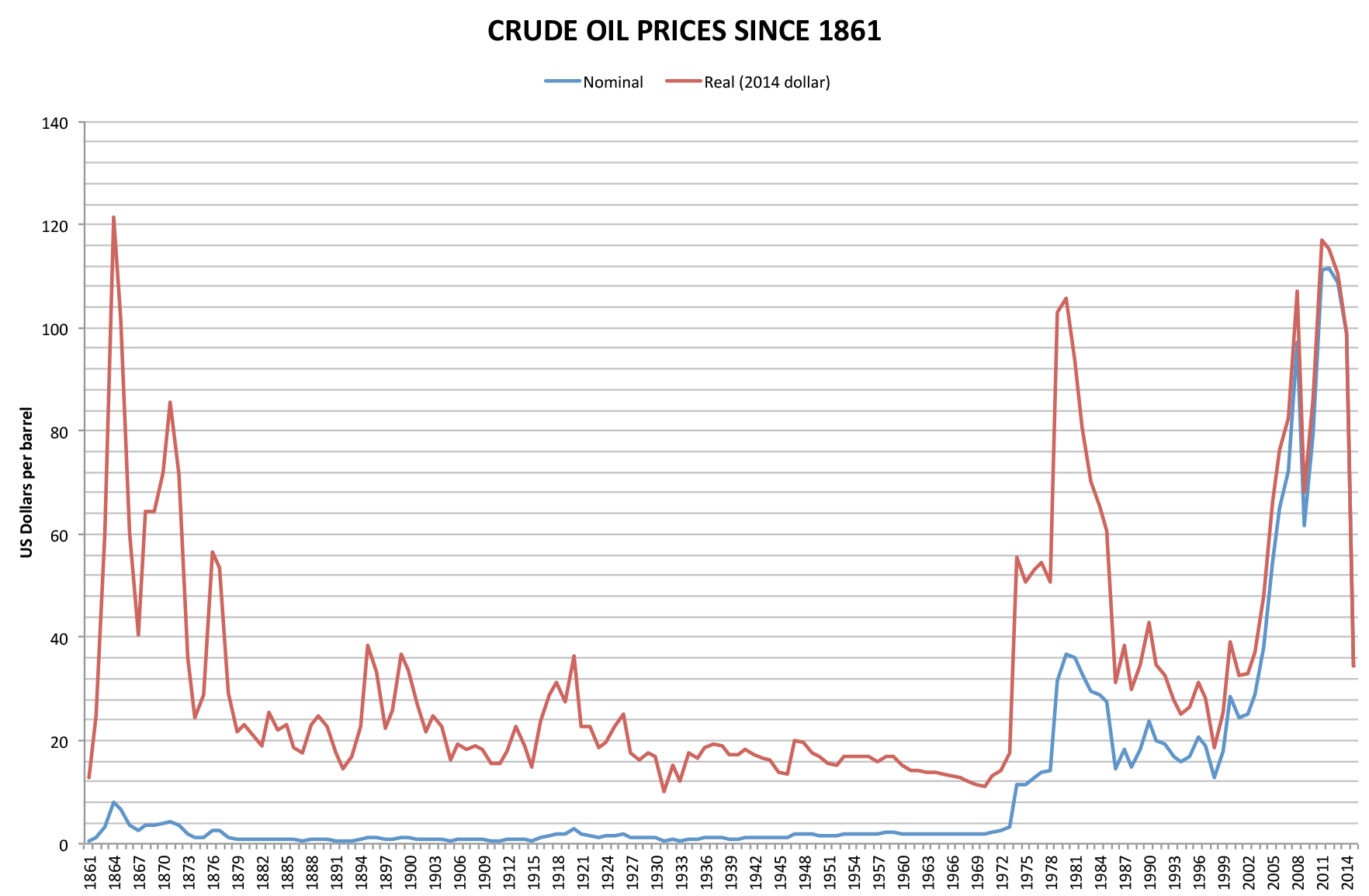|
Oil Depletion
Oil depletion is the decline in oil production of a well, oil field, or geographic area. The Hubbert peak theory makes predictions of production rates based on prior discovery rates and anticipated production rates. Hubbert curves predict that the production curves of non-renewing resources approximate a bell curve. Thus, according to this theory, when the peak of production is passed, production rates enter an irreversible decline. Resource availability Earth's natural oil supply is effectively fixed because petroleum is naturally formed far too slowly to be replaced at the rate at which it is being extracted. Over many millions of years, plankton, bacteria, and other plant and animal matter became buried in sediments on the ocean floor. When conditions were right—a lack of oxygen for decomposition, and sufficient depth and temperature of burial—these organic remains were converted into petroleum compounds, while the sediment accompanying them was converted int ... [...More Info...] [...Related Items...] OR: [Wikipedia] [Google] [Baidu] |
Oil Field
A petroleum reservoir or oil and gas reservoir is a subsurface accumulation of hydrocarbons contained in porous or fractured rock formations. Such reservoirs form when kerogen (ancient plant matter) is created in surrounding rock by the presence of high heat and pressure in the Earth's crust. Reservoirs are broadly classified as ''conventional'' and '' unconventional'' reservoirs. In conventional reservoirs, the naturally occurring hydrocarbons, such as crude oil (petroleum) or natural gas, are trapped by overlying rock formations with lower permeability, while in unconventional reservoirs the rocks have high porosity and low permeability, which keeps the hydrocarbons trapped in place, therefore not requiring a cap rock. Reservoirs are found using hydrocarbon exploration methods. Oil field An oil field is an area of accumulated liquid petroleum underground in multiple (potentially linked) reservoirs, trapped as it rises to impermeable rock formations. In industrial ... [...More Info...] [...Related Items...] OR: [Wikipedia] [Google] [Baidu] |
Hydraulic Fracturing
Fracking (also known as hydraulic fracturing, fracing, hydrofracturing, or hydrofracking) is a well stimulation technique involving the fracturing of Formation (geology), formations in bedrock by a pressurized liquid. The process involves the high-pressure injection of "fracking fluid" (primarily water, containing sand or other hydraulic fracturing proppants, proppants suspended with the aid of thickening agents) into a wellbore to create cracks in the deep-rock formations through which natural gas, petroleum, and brine will flow more freely. When the hydraulic pressure is removed from the well, small grains of hydraulic fracturing proppants (either sand or aluminium oxide) hold the fractures open. Fracking, using either hydraulic pressure or acid, is the most common method for well stimulation. Well stimulation techniques help create pathways for oil, gas or water to flow more easily, ultimately increasing the overall production of the well. Both methods of fracking are classe ... [...More Info...] [...Related Items...] OR: [Wikipedia] [Google] [Baidu] |
Trans-Alaska Pipeline System
The Trans-Alaska Pipeline System (TAPS) is an oil transportation system spanning Alaska, including the trans-Alaska crude-oil pipeline, 12 pump stations, several hundred miles of feeder pipelines, and the Valdez Marine Terminal. TAPS is one of the world's largest pipeline systems. The core pipeline itself, which is commonly called the Alaska pipeline, trans-Alaska pipeline, or Alyeska pipeline, (or the pipeline as referred to by Alaskan residents), is an long, diameter pipeline that conveys oil from Prudhoe Bay, on Alaska's North Slope, south to Valdez, on the shores of Prince William Sound in southcentral Alaska. The crude oil pipeline is privately owned by the Alyeska Pipeline Service Company. Oil was first discovered in Prudhoe Bay in 1968 and the 800 miles of 48" steel pipe was ordered from Japan in 1969 (U.S. steel manufacturers did not have the capacity at that time). However, construction was delayed for nearly 5 years due to legal and environmental issues. The ... [...More Info...] [...Related Items...] OR: [Wikipedia] [Google] [Baidu] |
Prudhoe Bay Oil Field
Prudhoe Bay Oil Field is a large oil field on Alaska's North Slope. It is the largest oil field in North America, covering and originally contained approximately of oil.Prudhoe Bay Fact Sheet . BP. August 2006. (Adobe Acrobat *.PDF document) The amount of recoverable oil in the field is more than double that of the next largest field in the United States by acreage (the East Texas Oil Field), while the largest by reserves is the Permian Basin (North America)< ... [...More Info...] [...Related Items...] OR: [Wikipedia] [Google] [Baidu] |
Railroad Commission Of Texas
The Railroad Commission of Texas (RRC; also sometimes called the Texas Railroad Commission, TRC) is the state agency that regulates the oil and gas industry, gas utilities, pipeline safety, safety in the liquefied petroleum gas industry, and surface coal and uranium mining. Despite its name, it ceased regulating railroads in 2005, when the last of the rail functions were transferred to the Texas Department of Transportation. Established by the Texas Legislature in 1891, it is the state's oldest regulatory agency, and began as part of the Efficiency Movement of the Progressive Era. From the 1930s to the 1960s, it largely set world oil prices, but was displaced by OPEC (Organization of Petroleum Exporting Countries) after 1973. In 1984, the federal government took over transportation regulation for railroads, trucking, and buses, but the Railroad Commission kept its name. With an annual budget of $79 million, it now focuses entirely on oil, gas, mining, propane, and pipeline ... [...More Info...] [...Related Items...] OR: [Wikipedia] [Google] [Baidu] |
1973 Oil Crisis
In October 1973, the Organization of Arab Petroleum Exporting Countries (OAPEC) announced that it was implementing a total oil embargo against countries that had supported Israel at any point during the 1973 Yom Kippur War, which began after Egypt and Syria launched a large-scale surprise attack in an ultimately unsuccessful attempt to recover the territories that they had lost to Israel during the 1967 Six-Day War. In an effort that was led by Faisal of Saudi Arabia, the initial countries that OAPEC targeted were Canada, Japan, the Netherlands, the United Kingdom, and the United States. This list was later expanded to include Estado Novo (Portugal), Portugal, Rhodesia, and South Africa. In March 1974, OAPEC lifted the embargo, but the price of oil had risen by nearly 300%: from US to nearly US globally. Prices in the United States were significantly higher than the global average. After it was implemented, the embargo caused an oil crisis, or "shock", with many short- and long ... [...More Info...] [...Related Items...] OR: [Wikipedia] [Google] [Baidu] |
United States
The United States of America (USA), also known as the United States (U.S.) or America, is a country primarily located in North America. It is a federal republic of 50 U.S. state, states and a federal capital district, Washington, D.C. The 48 contiguous states border Canada to the north and Mexico to the south, with the semi-exclave of Alaska in the northwest and the archipelago of Hawaii in the Pacific Ocean. The United States asserts sovereignty over five Territories of the United States, major island territories and United States Minor Outlying Islands, various uninhabited islands in Oceania and the Caribbean. It is a megadiverse country, with the world's List of countries and dependencies by area, third-largest land area and List of countries and dependencies by population, third-largest population, exceeding 340 million. Its three Metropolitan statistical areas by population, largest metropolitan areas are New York metropolitan area, New York, Greater Los Angeles, Los Angel ... [...More Info...] [...Related Items...] OR: [Wikipedia] [Google] [Baidu] |
Unconventional Oil
Unconventional (oil and gas) reservoirs, or unconventional resources (resource plays) are Petroleum geology, accumulations where oil and gas Phase (matter), phases are tightly bound to the rock fabric by strong capillary action, capillary forces, requiring specialized measures for evaluation and Petroleum extraction, extraction. Conventional reservoir Oil and gas are Petroleum#Transformation of kerogen into fossil fuels, generated naturally at depths of around 4 or 5 km below Earth’s Earth#Surface, surface. Being lighter than the water-Groundwater, saturated rocks below the water table, the oil and gas are driven by buoyancy up through aquifer pathways towards Earth's surface over time. Some of the oil and gas percolate all the way to the surface as natural Petroleum seep, seepages, either on land or on the sea floor. The rest remains trapped underground by Petroleum reservoir#seal rock, geological barriers in a variety of Petroleum reservoir#Geology#traps, trap geometries ... [...More Info...] [...Related Items...] OR: [Wikipedia] [Google] [Baidu] |
Theoretical Multiple Oil Field Production Curve
A theory is a systematic and rational form of abstract thinking about a phenomenon, or the conclusions derived from such thinking. It involves contemplative and logical reasoning, often supported by processes such as observation, experimentation, and research. Theories can be scientific, falling within the realm of empirical and testable knowledge, or they may belong to non-scientific disciplines, such as philosophy, art, or sociology. In some cases, theories may exist independently of any formal discipline. In modern science, the term "theory" refers to scientific theories, a well-confirmed type of explanation of nature, made in a way consistent with the scientific method, and fulfilling the criteria required by modern science. Such theories are described in such a way that scientific tests should be able to provide empirical support for it, or empirical contradiction ("falsify") of it. Scientific theories are the most reliable, rigorous, and comprehensive form of scientific kn ... [...More Info...] [...Related Items...] OR: [Wikipedia] [Google] [Baidu] |
Steam
Steam is water vapor, often mixed with air or an aerosol of liquid water droplets. This may occur due to evaporation or due to boiling, where heat is applied until water reaches the enthalpy of vaporization. Saturated or superheated steam is invisible; however, wet steam, a visible mist or aerosol of water droplets, is often referred to as "steam". When liquid water becomes steam, it increases in volume by 1,700 times at standard temperature and pressure; this change in volume can be converted into work (physics), mechanical work by steam engines such as reciprocating engine, reciprocating piston type engines and steam turbines, which are a sub-group of steam engines. Piston type steam engines played a central role in the Industrial Revolution and modern steam turbines are used to generate more than 80% of the world's electricity. If liquid water comes in contact with a very hot surface or depressurizes quickly below its vapor pressure, vapour pressure, it can create a steam exp ... [...More Info...] [...Related Items...] OR: [Wikipedia] [Google] [Baidu] |
Carbon Dioxide
Carbon dioxide is a chemical compound with the chemical formula . It is made up of molecules that each have one carbon atom covalent bond, covalently double bonded to two oxygen atoms. It is found in a gas state at room temperature and at normally-encountered concentrations it is odorless. As the source of carbon in the carbon cycle, atmospheric is the primary carbon source for life on Earth. In the air, carbon dioxide is transparent to visible light but absorbs infrared, infrared radiation, acting as a greenhouse gas. Carbon dioxide is soluble in water and is found in groundwater, lakes, ice caps, and seawater. It is a trace gas Carbon dioxide in Earth's atmosphere, in Earth's atmosphere at 421 parts per million (ppm), or about 0.042% (as of May 2022) having risen from pre-industrial levels of 280 ppm or about 0.028%. Burning fossil fuels is the main cause of these increased concentrations, which are the primary cause of climate change.IPCC (2022Summary for pol ... [...More Info...] [...Related Items...] OR: [Wikipedia] [Google] [Baidu] |
Solvent
A solvent (from the Latin language, Latin ''wikt:solvo#Latin, solvō'', "loosen, untie, solve") is a substance that dissolves a solute, resulting in a Solution (chemistry), solution. A solvent is usually a liquid but can also be a solid, a gas, or a supercritical fluid. Water is a solvent for Chemical polarity#Polarity of molecules, polar molecules, and the most common solvent used by living things; all the ions and proteins in a Cell (biology), cell are dissolved in water within the cell. Major uses of solvents are in paints, paint removers, inks, and dry cleaning. Specific uses for Organic compound, organic solvents are in dry cleaning (e.g. tetrachloroethylene); as paint thinners (toluene, turpentine); as nail polish removers and solvents of glue (acetone, methyl acetate, ethyl acetate); in spot removers (hexane, petrol ether); in detergents (D-limonene, citrus terpenes); and in perfumes (ethanol). Solvents find various applications in chemical, pharmaceutical, oil, and gas ... [...More Info...] [...Related Items...] OR: [Wikipedia] [Google] [Baidu] |







